How To Clean an Outdoor Wood Heater: A Step-By-Step Guide
Posted by SEBASTIAN ZOTA
This is another Alternative Heating & Supplies episode and in this blog post we are going to talk about the water that has been in the unit for the whole season. This can be done in the spring and the fall. Learn what products to use, how to drain the system and how often should you clean your furnace.
Wood Boiler Maintenance
What Products Can Be Used for Cleaning the Inside of the Stove?
What we're gonna use is a product that I also carry, it's called CF205.
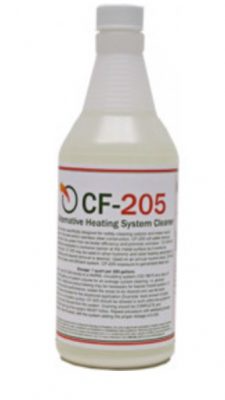
Wood Boiler System Cleaner
The purpose of it is, is you're gonna add this to the water that's been in the unit for the year, and it's gonna clean the unit as it runs for 4-8, no more. Depending on how long it's been, you can add up to 3 gallons of white vinegar that you buy at your local store.
How Often Should You Clean the Inside of the Unit?
It is recommended to clean the inside of the unit once per year. If you’re doing this early, I would only recommend using 1 gallon of white vinegar, but if you haven’t done it in several years, go for the 3 gallons, and 2 gallons in between. I'm gonna add this now, and I'm gonna let it run for 4-8 hours.
I'm gonna add CF205 to the unit at the 2 inch port in the back of the chimney. Most units have a two-inch port here. We're just gonna pour it in.
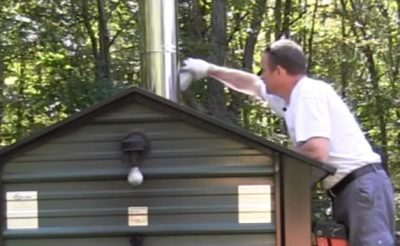
Adding the CF205 to the Chimney
And then shortly after, we're gonna add the gallons of vinegar, in my case, I'm gonna add one.
Now, this is running, my pump is running, it's going through my heat exchangers inside the building, and it'll run for 4-8 hours...and that's it.
After that, we're gonna drain the system and everything should be pretty clean. And then, we're gonna to refill and add our ProTech.
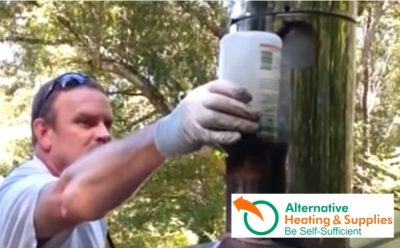
Adding Vinegar to the chimney
Okay, we have added the CF205 and the white vinegar, it's been about four to eight hours, it's been somewhere in the ballpark of seven hours.
Draining the System
So, what we're gonna to do is, we're gonna drain the system. In our case, we have a one-loop system here. I'm gonna to shut the ball valves to prevent me losing the water in my loop, so I don't have to bleed that again, and I'm gonna open my main drain. And you can see by the color of the water, how much the CF205 really cleans the unit.
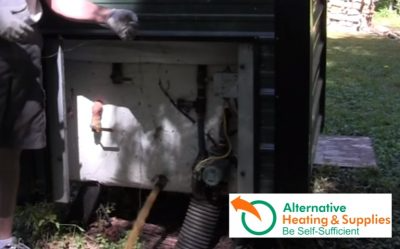
Cleaning the Unit Heater
We're gonna add more water, and we're also gonna flush out what's also sitting at the bottom, like chocolate milk sitting at the bottom. So, we're gonna keep flushing, but I'm not gonna do this all right now, or I'm gonna sink. Usually, I'll walk away from this. In this case, there are about 120 gallons in this unit.
Wood Heater Water Treatment
After the unit has been drained and it’s empty, we flushed it out as best we can.
The way we flush it is, we put a garden hose in there, stirred up the muck, spilt it out, until it ran clear. Now we know it's as clean as we're gonna get it.
In this case, there are two products that we use, is A200. This is a nitrate-based product, it is environmentally very friendly.
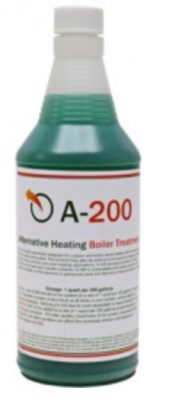
A-200 for Wood Stoves
It is usually a little bit more expensive than the nitrite-based product, which we also sell, called ProTech 300.
Most of the manufacturers in the business use a nitrite-based product, it is a little bit more aggressive on the scale and rust inhibitor. A little harder on the environment, but it's not that bad also, it's a sodium-based product.
In this case, our customer has decided to use an A200 product because this actually treats up to 200 gallons, which is 120 here. So, this is no problem. Simply all we're gonna to do is open it, pour it in, and let it fill up.
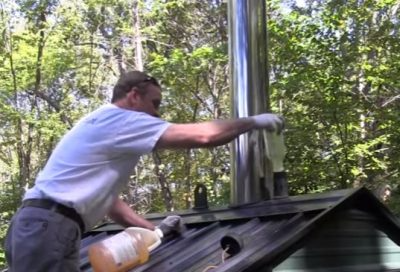
Water Treatment for the Wood Stove
We're gonna fill it up with water, reopen those valves that are close to the zone. Yes, there's some CF205 still in that zone, but that has no effect. That's gonna be neutralized by the couple hundred gallons.
We're gonna replace our cap, which holds the moisture in, and that's what keeps us from evaporating so much water.

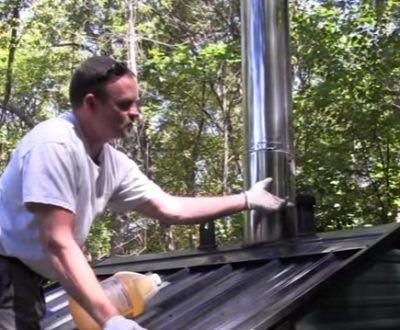
Wood Stove Steam
Now, if you're coming out to find your unit like this, this is sometimes common. What happens is, the steam will flash freeze to it, and when the heat turns on, it'll give it a little pop, making it bounce off.
Now, if you find it over on the side, that means you're probably boiling your unit. You need to check for air flow problems and something else.
If you have any maintenance questions, please write them below and check out our next video on how to set up the control panel.
Until then, check out our yearly maintenance kits and do it yourself kits, and if you need assistance or you have questions that we did not cover here, give us a call!
